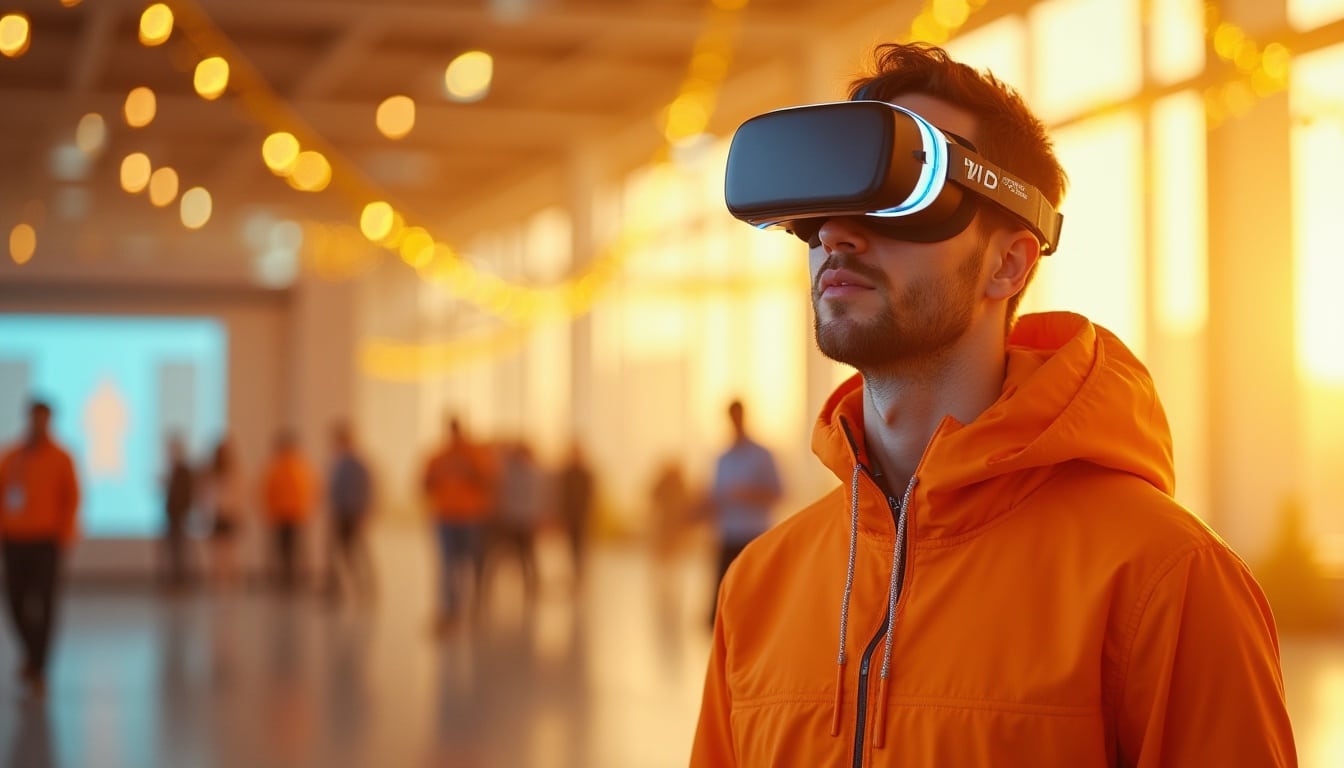Sure! Here’s the translation:
The Metaverse is no longer just a futuristic promise or a digital leisure space. At Automatica 2025, the leading international trade fair for intelligent automation held in Munich, the industrial version of this technology – the Industrial Metaverse – is presented as a cross-cutting revolution for all productive sectors. At the heart of this technological leap is NVIDIA, which, with its Omniverse platform and collaboration with leaders like Siemens, Sick, and Schunk, demonstrates that this vision is already in motion.
From Simulation to Native Digital Factory
One of the most cited cases at Automatica has been the native digital factory of Siemens in Nanjing, developed entirely in virtual environments before its physical construction. Thanks to its photorealistic and functional digital twin, it was possible to optimize the plant, correct design errors in early phases, and double its production capacity compared to conventional plants. All this has been made possible by the synergy between Siemens’ Xcelerator platform and the advanced simulation engine provided by NVIDIA Omniverse.
This case shows how the Industrial Metaverse is not just a visual representation but an interactive, operational, and predictive environment, where each component—from a sensor to a robotic cell—has a functional, real-time synchronized digital twin.
Omniverse and Virtual Sensors: NVIDIA’s Role in Interoperability
NVIDIA has played a crucial role in developing industrial virtual environments thanks to Omniverse, a platform that allows the integration of digital twins from different sources using open standards and unprecedented graphical capabilities. Companies like Sick, sensor manufacturers, have already integrated digital versions of their products into Omniverse to facilitate testing in simulated 3D environments using the Robotic Simulation Kit.
This allows integrators and automation system designers to validate sensor behaviors, plan production lines, and anticipate complex interactions without the need for physical prototypes, speeding up development and reducing costs.
Continuous Digital Engineering and Robotics in the Metaverse
Another notable exhibitor, Schunk, has implemented a complete robotic cell within the Metaverse that precisely replicates its physical counterpart. This demonstration of “continuous digital engineering” allows working with the product from its design to its after-sales maintenance, all within the shared virtual environment.
According to Timo Gessmann, CTO of Schunk, “the Industrial Metaverse allows us to plan, simulate, test, and even maintain products without leaving the digital environment. This reduces time, errors, and barriers between work teams.” This vision, supported by NVIDIA’s graphical power and collaboration among multiple players, points to a new paradigm of industrial development.
Democratizing the Metaverse: AI, Robotics, and Accessibility
An important challenge for the Industrial Metaverse is its adoption by small and medium-sized enterprises. In this regard, firms like igus have focused on creating the “iguverse,” an accessible environment where even non-technical users can design products efficiently and sustainably. NVIDIA, as a technology partner, provides the necessary support in terms of hardware and software to make these experiences seamless and realistic.
The low-cost collaborative robots RBTX, integrated with digital twins and AI solutions in Omniverse, allow SMEs to explore the Metaverse on tight budgets without relying on large R&D departments.
Collaboration, Interoperability, and New Business Models
One of the key conclusions from Automatica 2025 is that the Industrial Metaverse cannot be built in isolation. It requires open platforms, standardized data models, and a collaborative mindset. As Gessmann highlights: “The virtual world is not created by a single company. Cooperation and interoperability are basic conditions for building the Industrial Metaverse.”
In this new scenario, NVIDIA acts as a technological facilitator, providing the environment where the visions of sensor manufacturers, robots, PLCs, and automation platforms converge, all with a common base of simulation, visualization, and AI training.
Beyond the Avatar: The Future is Built in Both Physical and Digital Realms
Although virtualization is advancing rapidly, the organizers of Automatica remind us that face-to-face meetings remain irreplaceable for building trust and agreements. The Industrial Metaverse is progressing, but it does so based on experience, direct contact, and in-person collaboration, as seen these days in the halls of Munich.
With NVIDIA and its allies leading this transformation, the Industrial Metaverse is shaping up not as a trend, but as the next quantum leap in global productivity. A convergence of AI, robotics, and simulation that promises to redefine the design, manufacturing, and operation of tomorrow’s factories.
via: automatica
Please let me know if you need anything else!

